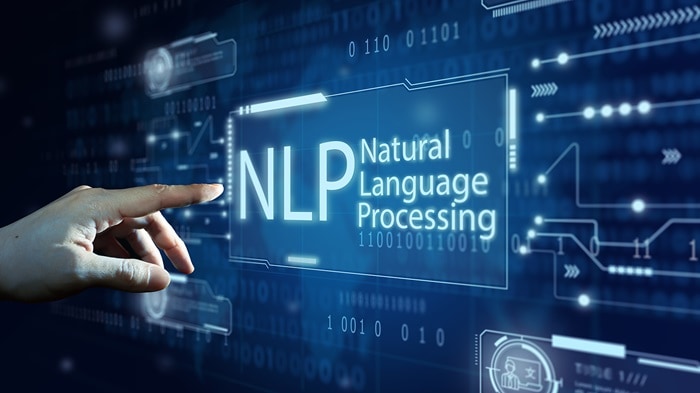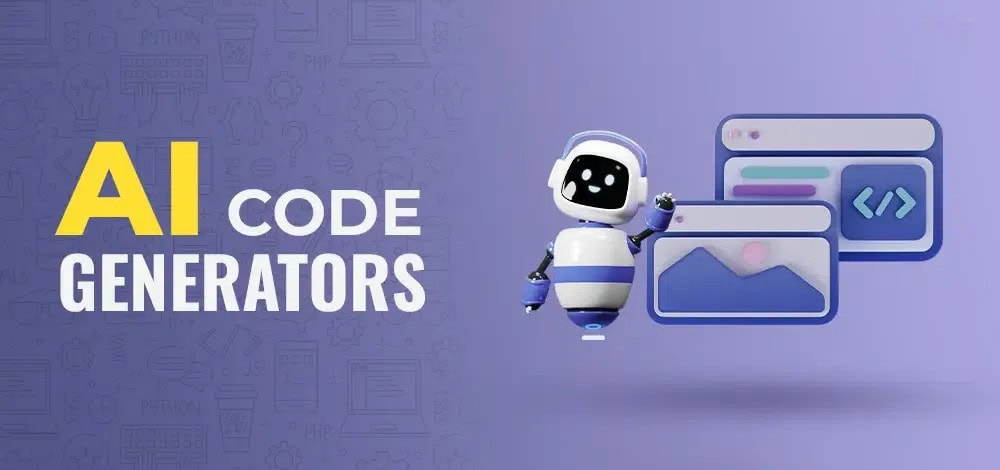SEO has evolved significantly beyond the era of keyword stuffing. Contemporary search engines, including Google, depend on sophisticated natural language processing (NLP) to comprehend searches and align them with pertinent content.
In this article, we explore NLP concepts that influence modern SEO by providing insights on improving your content optimization strategies.
How Does Machines Analyze and Interpret Language?
It’s beneficial to begin by exploring the process and purpose behind how machines analyze and handle the text they receive as input.
When you press the “K” button on your keyboard, your computer doesn’t directly comprehend the meaning of “K.” Instead, it sends a message to a low-level program, guiding the computer on how to process and manipulate electrical signals originating from the keyboard.
This program then interprets the signal, translating it into actions the computer can recognize, such as displaying the letter “K” on the screen or executing tasks related to that specific input.

This simple explanation shows that computers operate with numbers and signals rather than abstract concepts like letters and words. In Natural Language Processing (NLP), the challenge lies in instructing these machines to understand, interpret, and generate human language, which inherently possesses nuances and complexities.
Fundamental techniques enable computers to initiate an “understanding” of text by identifying patterns and relationships within numerical representations of words. These techniques include:
- Tokenization is the breaking down of text into constituent parts (like words or phrases).
- Vectorization is converting words into numerical values.
The fact is that even the most sophisticated algorithms don’t perceive words as concepts or language; they interpret them as signals and noise.
Latent Semantic Indexing LSI keywords
Another of the many buzzwords that fly around in the SEO circles is “Latent Semantic Indexing,” or LSI. The theory is such that there are keywords and phrases that are semantically related with your main keyword, and by you including them within your content, it helps contextualize your page with the search engines.
The LSI works by sorting the system in a library for text. It was developed in the 1980s, it assists computers in discerning connections between words and concepts across a collection of documents. However, it’s important to note that this “collection of documents” does not consist of Google’s entire index. LSI was integrated to identify similarities within a specific group of documents sharing similarities.
Here’s the mechanicals: Suppose you’re investigating ” Election Result” A basic keyword search may yield documents explicitly mentioning “Vote Counting.” But what about those valuable pieces addressing “Ballot Box Security,” “Ballot Paper Template,” or “How To Win Election”?
Large Language Models Vs. Search Engines: What You Need to Know
This is where LSI proves beneficial. It recognizes semantically related terms, ensuring that you don’t overlook relevant information, even when the exact phrase isn’t used. It’s worth mentioning that Google is not using a 1980s library technique to rank content; their equipment is far more sophisticated than that now.
Contrary to a common misconception, LSI keywords are not directly used in modern SEO or by search engines such as Google. The term LSI is outdated, and Google doesn’t use a semantic index anymore. However, semantic understanding and other machine language techniques remain valuable. These changes have led to more advanced Natural Language Processing (NLP) techniques at the core of how search engines analyze and interpret web content today.
So, let’s move beyond the focus solely on keywords. We now have machines that interpret language in unique ways, and we are aware that Google uses techniques to align content with user queries. But what goes beyond the basic keyword match? This is where neural matching, and advanced NLP techniques in today’s search engines come into play.
The Significance of Entities in Search Queries
Entities serve as a foundational element in Natural Language Processing (NLP) and represent a significant focus for SEO strategies.
Here is how Google uses entities:
- Knowledge Graph Entities: These entities are well-defined, such as famous authors, historical events, landmarks, etc., and they are in Google’s Knowledge Graph. They are easily recognizable and frequently appear in search results accompanied by rich snippets or knowledge panels.
- Lower-Case Entities: While not as prominent as knowledge graph entities, these entities are still acknowledged by Google. They may include lesser-known names or specific concepts relevant to your content. Despite not having dedicated spots in the Knowledge Graph, Google’s algorithms can still identify them.
Understanding the interconnected “web of entities” is important. It enables us to create content that resonates with user objectives and search queries, increasing the likelihood of our content being considered relevant by search engines.
How to Optimize Your Content for Search Questions using Deep Learning
Understanding Named Entity Recognition
NER is one of the important techniques in NLP that involves the automatic identification of named entities present in text and their classification into predefined categories, such as persons, organizations, and locations.
Example: “Elon Musk bought Twitter Inc. in 2022.”
A human easily identifies:
- “Elon Musk” as a person.
- “Twitter Inc.” as a company.
- “2022” as a time.
NER serves as a method to guide systems in understanding such context.
Various algorithms are used in NER:
- Rule-Based Systems: These rely on created rules to identify entities based on patterns. If it resembles a date, it’s recognized as such. If it resembles currency, it’s categorized accordingly.
- Deep Learning Models: Using recurrent neural networks, long short-term memory networks, and transformers, these models capture intricate patterns in text data.
- Statistical Models: These models learn from a labeled dataset where individuals classify Elon Musk, Twitter, and 2023s into their respective entity types. When new text appears, similar names, companies, and dates fitting comparable patterns are labeled. Examples include Hidden Markov Models, Maximum Entropy Models, and Conditional Random Fields.
Large dynamic search engines like Google would in all likelihood use a combination of these methods whereby they could learn about new entities as they come into existence online.
NLP entities, SEO entities, and named entities in SEO.
Entities, a term in NLP, are used by Google in Search in two ways:
- Some entities are part of the knowledge graph, such as authors.
- There are also lowercase entities acknowledged by Google, although not yet formally categorized. (Google can identify names, even if they aren’t well-known individuals.)
Grasping this network of entities aids in comprehending user objectives concerning our content.
Neural Matching, BERT, and Other NLP Methodologies Developed by Google
Google’s pursuit of comprehending the intricacies of human language has led it to embrace advanced Natural Language Processing (NLP) techniques. Among the most widely discussed in recent years are neural matching and BERT. Let’s explore what these methods entail and how they are transforming the landscape of search.
Neural Matching
This goes beyond keywords. Envisioning a scenario where one searches for “places to go for summer vacation.” In the conventional approach, Google might have focused on the terms “places” and “summer season,” potentially yielding results related to holidays or Amusement Parks.
In contrast, with neural matching, it’s about the nuance-behind-the-lines kinds of inputs. Notably, Google will understand that a user is most likely interested in parks or beaches rather than today’s index of weather.
BERT: Bidirectional Encoder Representations from Transformers
While neural matching assists Google in reading between the lines, BERT takes understanding to a deeper level, grasping the entirety of a query.
Unlike traditional approaches that process words individually and sequentially, BERT analyzes each word in the context of the entire sentence, capturing the intricate relationships among them with greater precision. In essence, it comprehends not just the words but also their contextual significance and arrangement.
Consider the nuanced contrast between queries like “Best Hotels for Christmas Holiday” and “Best Hotel For Holiday,” akin to discerning the difference between “Only he drove her to the airport today” and “he drove only her to the airport today.” Now, juxtapose this with our earlier, rudimentary systems.
In conventional machine learning, vast datasets represented by tokens and vectors are used, with algorithms iteratively learning patterns from this data. However, with advancements like neural matching and BERT, Google transcends the conventional paradigm of merely matching search queries with keywords found on web pages.
Instead, it strives to show the user’s underlying intent, discerning the intricate relationships between words to offer results that authentically fulfill the user’s requirements.
For instance, when someone searches for “malaria fever remedies,” the search engine will grasp the context, recognizing the intent behind seeking solutions for symptoms associated with malaria, rather than focusing on the literal interpretation of “malaria” or “fever.”
The context in which words are used and their relevance to the subject matter carry significant weight. This doesn’t imply that keyword stuffing is obsolete but rather emphasizes the importance of selecting the right keywords to integrate.
It’s essential not only to consider what is currently ranking but also to explore related concepts, inquiries, and questions for a more comprehensive approach. Content that addresses the query in a thorough, contextually pertinent manner is prioritized.
Understanding the user’s underlying intent behind their queries has become more critical than ever. Google’s advanced NLP techniques align content with the user’s intent, whether it’s informational, navigational, transactional, or commercial.
Tailoring content to align with these intents—by offering answers to inquiries and presenting guides, reviews, or product pages when appropriate—can enhance search performance. Moreover, it’s important to understand how and why your niche might rank for a particular query intent.
Large Language Models and Retrieval-Augmented Generation
Beyond conventional NLP techniques, Large Language Models have come to the fore in cyberspace, including GPT, which is an abbreviation for Generative Pre-trained Transformer, coupled with new approaches like retrieval-augmented generation. These are setting new parameters with respect to machine understanding of human language and the generation thereof.
LLMs go beyond mere comprehension. Certain models, such as GPT, have been trained on enormous sets of diverse internet text. The power of LLMs comes from their ability to predict the next word in a sentence from the context provided by the previous words. That versatility in prediction is what makes them very adaptable to the generation of text quite similar to human speech across a wide range of topics and styles.
However, it has to be taken in that LLMs are not omniscient machines. They have no access to current data on the internet and have no factual knowledge in themselves. Their responses are based on patterns they had picked up during training. Therefore, as much as they can produce highly coherent and contextually relevant material, factuality and timeliness can only be assured by fact-checking.
RAG stands for Retrieval-Augmented Generation, a novel approach introduced to increase precision by adding the generative powers of LLMs to the accuracy characteristic of information retrieval.
When an LLM has generated a response, RAG steps in to retrieve information from either a database or the internet that can help validate or add more value to what has been generated. The process ensures that the final product is fluent and coherent but also accurate, enriched, and based on reliable data.
Large Language Models Applications in SEO
Understanding and using these technologies can bring new opportunities for content development and refinement.
Using LLMs enables the creation of diverse and captivating content that resonates with audiences, effectively addressing their inquiries comprehensively. RAG further elevates this content by ensuring its factual accuracy, enhancing its credibility, and augmenting its value to the audience.
This concept is encapsulated in the Search Generative Experience (SGE), which integrates RAG and LLMs. This fusion often results in “generated” outcomes closely resembling ranked text, occasionally leading to SGE results that may appear peculiar or pieced together.
However, this convergence frequently fosters content that gravitates toward mediocrity and reinforces biases and stereotypes. LLMs, trained on internet data, tend to produce outputs reflecting the median of that data, which are then reinforced through the retrieval of similarly generated information—a phenomenon colloquially termed “enshittification.”
How To Use NLP Techniques on Content
Unleashing the power of machine comprehension to take your SEO game to the next level, here is how you could do it using NLP techniques on your content:
Identify Key Entities in Your Content: Through the use of NLP tools, detect named entities within your content, such as people, organizations, places, dates, and more. These insights will allow you to make your content comprehensive and informative on every theme that might interest your audience. You will also have the opportunity to embed rich contextual links inside your content.
Let NLP tools study the readability of your text. They will then provide you with ideas and suggestions on how to create a text that is more accessible and interesting to your readers.
You will be able to increase the length of time people spend on your site and reduce bounce rates by including direct language, clear structure, and focused messaging based on the NLP analysis. For this purpose, a readability library that can easily be installed from pip is of great help.
User intent analysis: The power of NLP can enable you in classifying the intent of the searchers that go on with your content-is it going to be information need, transactional purpose, or a particular service? The accentuation of this can give a dramatic boost to your SEO performance.
Semantic Analysis for Content Enrichment: Besides keyword density, semantic analysis also reveals related concepts and topics that your original content might not have explicitly covered.
Incorporating such topics can enhance the completeness of your content and make it relevant for various search queries. Perform semantic analysis and improve your content using TF:IDF, LDA, NLTK, Spacy, and Gensim.
Would you like to read more about “How to Use Natural Language Processing (NLP) for Modern SEO” related articles? If so, we invite you to take a look at our other tech topics before you leave!








